3. LUO SETTLEMENTS AND HOME STRUCTURES
When the Luo moved into their present territory, there was a lot of warfare between competing groups and therefore a need to defend settlements from attack. Such defences around settlements were either earthworks ( gunda bur ) or stonewalls ( ohinga ). These were usually made in a curve around the living area, and sometimes enclosed several hundred houses ( udi ).

1998.349.115.1
Abandoned earthwork (g unda bur ) in Alego. Evans-Pritchard, 1936
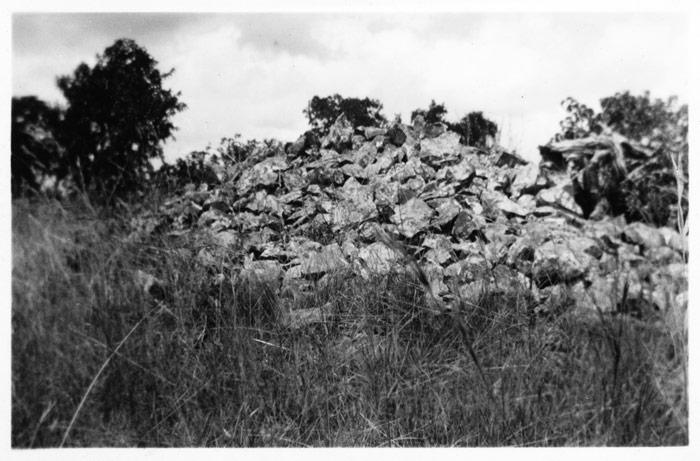
1998.349.220.2
Abandoned Kangipi stonewall (ohinga ) settlement. Evans-Pritchard, 1936
It is thought that with the improvement in security, particularly after the establishment of colonial rule, the Luo began to make individual family homesteads ( dala ) and spread out in villages ( gweng' ) over a larger area of gently undulating land.
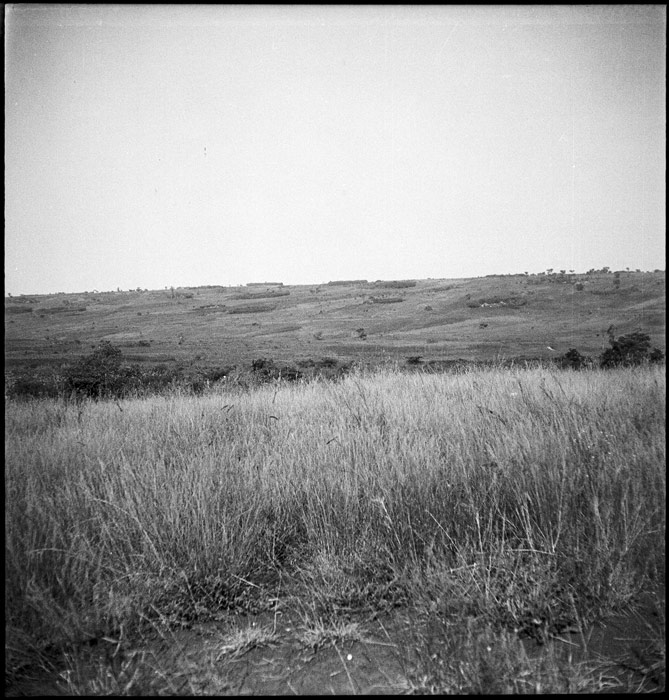
1998.349.82.1
Luo village (gweng' ) in Ugenya Location
Evans-Pritchard 1936
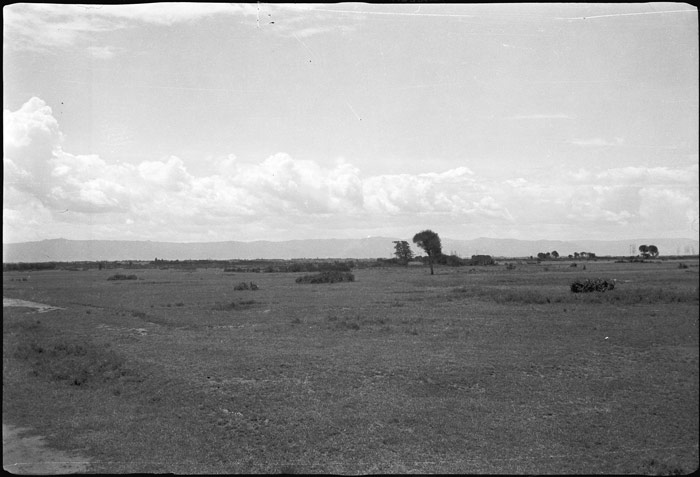
1998.349.108.1
Luo village (gweng' ) in the plains of Kano Location
Evans-Pritchard 1936
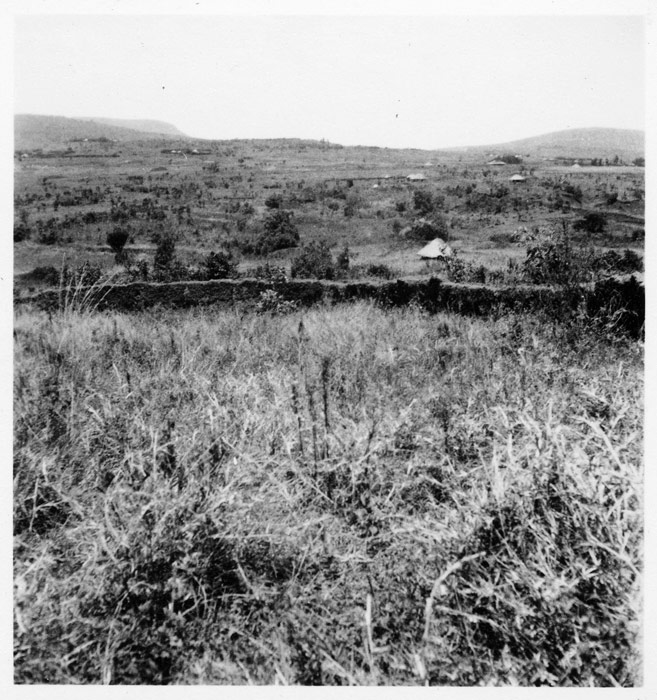
1998.349.143
Luo village (gweng' ) of Kagoinya?
Evans-Pritchard 1936
The round homestead (dala ) was the settlement unit for a family and was fenced by thickly-grown euphorbia trees (ojuok ) and thorn brush to keep away enemies, intruders and wild animals.
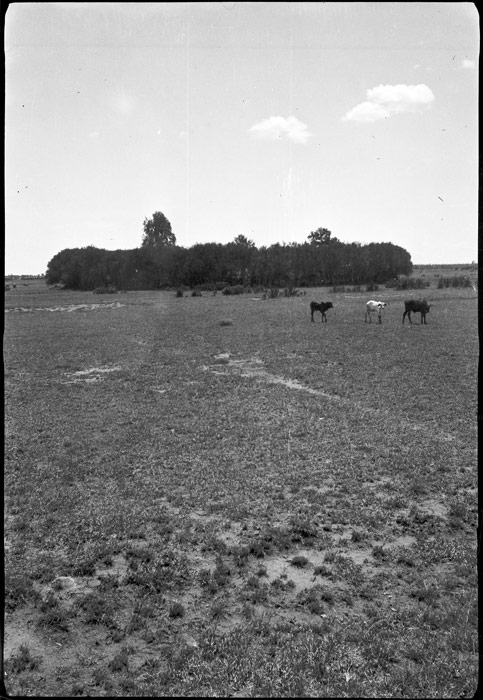
1998.349.101.1
Luo homestead (dala ) in the plains of Kano Location with Nandi Escarpment on the horizon
Evans-Pritchard 1936
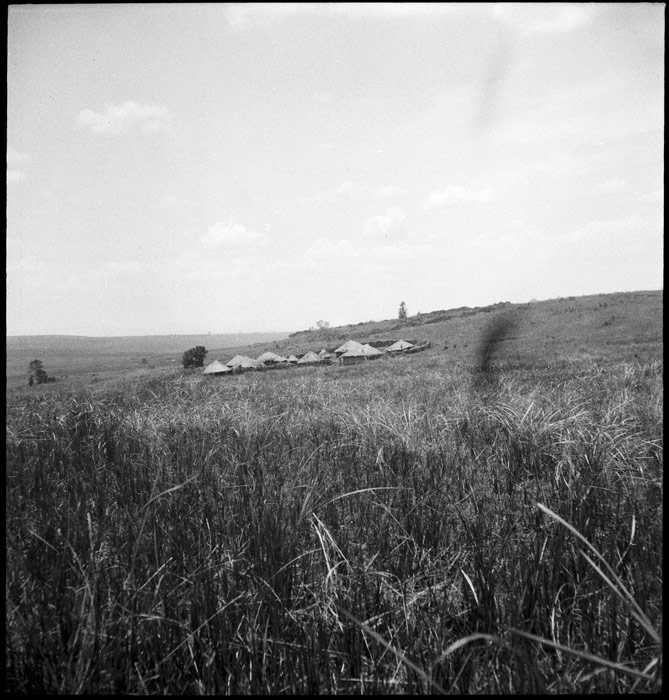
1998.349.295
Luo homestead ( dala ) on a higher slope
Evans-Pritchard 1936
The homestead had a main entrance (rangach ) and other smaller private or secret entrances (rot ). Inside the homestead was a well-defined layout of huts (udi ) and granaries (dero ) surrounding the central cattle pen (kul ).
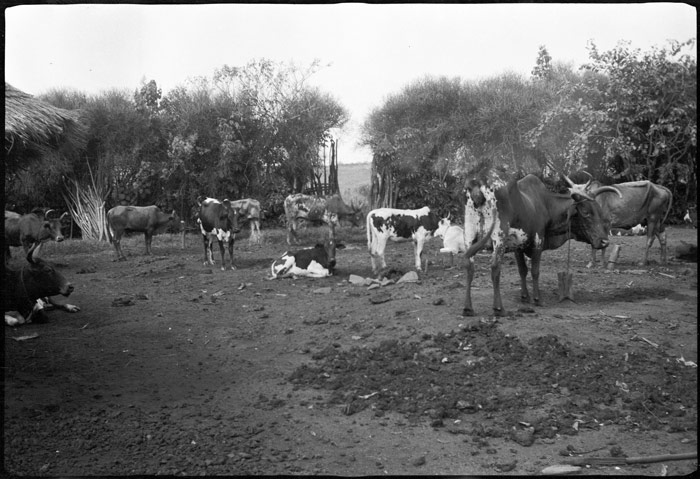
1998.349.127.1
Luo homestead (dala ) with the main entrance (rangach )
leading into the cattle kraal ( kul )
Evans-Pritchard 1936
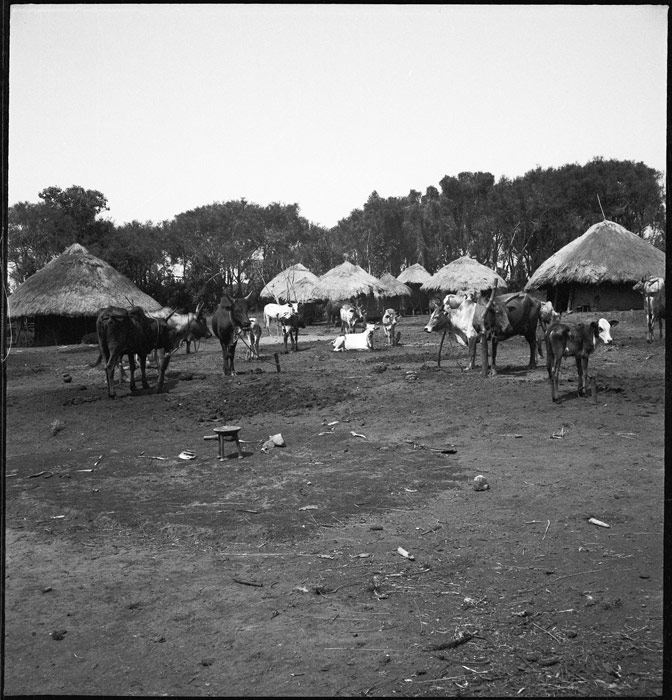
1998.349.122.1
Layout of the inside of a Luo homestead (dala ) with cattle in the pen (kul ) surrounded by huts (udi ) and granaries (dero )
Evans-Pritchard 1936
The huts, especially that of the senior wife were elaborately built but the most important area was the veranda ( agola ), built by extending the thatched roof supported by pillars. It is here that most domestic activities took place including grinding flour, cooking, keeping poultry and small or young domestic animals.

1998.349.152.1
Luo hut with the veranda (agola ) where the grinding stone (pong' ) is located.
Evans-Pritchard 1936